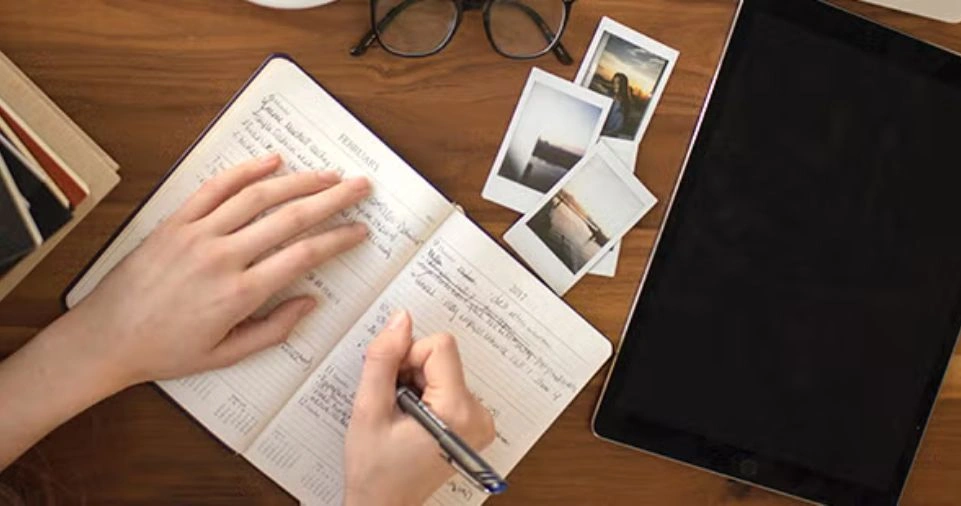Writer’s block is one of the most frustrating challenges any writer can face. Whether you’re crafting an article, a novel, or simply jotting down ideas, the inability to move forward can feel paralyzing.
However, overcoming writer’s block is entirely possible with the right strategies. In this guide, we’ll explore practical techniques and actionable tips to help you break free from creative stagnation and reignite your writing flow.
From adjusting your environment and setting achievable goals to using writing prompts and taking strategic breaks, you’ll discover methods to tackle writer’s block head-on. Say goodbye to frustration and unlock your full creative potential today.
What is Writer’s Block?
Writer’s block is a condition where a writer is unable to produce new written work or experiences a lack of creative ideas.
It can occur at any stage of the writing process, from brainstorming ideas to drafting or revising a piece.
Writer’s block can be caused by various factors, including stress, lack of motivation, self-doubt, or even external distractions. Understanding the underlying causes of writer’s block is the first step in overcoming it.
Causes of Writer’s Block
- Self-Doubt: Writers often struggle with the fear of not producing good work. This fear can paralyze creativity and prevent progress.
- Perfectionism: The desire to write the perfect first draft can lead to frustration. Many writers feel pressure to create flawless content from the start, which is unrealistic.
- Lack of Inspiration: Sometimes, you may just run out of ideas or feel uninspired. Inspiration can come and go, and when it’s gone, writer’s block can creep in.
- Burnout: Writing for extended periods without breaks can lead to mental and physical exhaustion, resulting in a lack of motivation.
- Distractions: External factors like social media, personal issues, or an unorganized workspace can disrupt your writing flow.
- Overthinking: Overanalyzing your work can hinder creativity. You may become so focused on getting everything perfect that you can’t move forward.
How to Overcome Writer’s Block and Get Inspired?

Writer’s block doesn’t have to be permanent. By adopting the right strategies, you can overcome it and rediscover your passion for writing.
Below, we’ll dive into actionable steps to help you break free from writer’s block and reignite your creativity.
Create a Dedicated Writing Space
A cluttered or distracting environment can make it difficult to focus. Designating a quiet, comfortable space for writing can help clear your mind and improve productivity. Here’s how you can create the ideal writing environment:
- Remove distractions: Turn off notifications on your phone and computer to avoid social media and other distractions.
- Organize your workspace: Keep your writing area tidy and free from clutter to help you focus on the task at hand.
- Create an inspiring atmosphere: Decorate your space with items that motivate you, such as books, art, or personal mementos.
Table: Ideal Writing Environment Features
| Feature | Description |
|---|---|
| Comfortable Chair | Ensures you can write for long periods without physical discomfort |
| Quiet Space | A quiet environment minimizes distractions |
| Natural Light | Exposure to natural light can boost mood and productivity |
| Inspiring Decor | Items like books, quotes, or artwork can enhance creativity |
ALSO READ: How to Develop a Plot That Keeps Readers Engaged?
Set Small, Achievable Goals
Setting overwhelming goals can be intimidating. To combat this, break your writing tasks into smaller, more manageable goals.
Instead of aiming to write a 2000-word article in one sitting, start with a goal of writing 500 words. Achieving these smaller goals will give you a sense of accomplishment and motivate you to keep going.
Freewriting
Freewriting is a powerful technique that involves writing without any specific structure or rules. The goal is to let your thoughts flow freely and get your ideas down on paper without worrying about grammar or coherence. Freewriting helps you bypass the inner critic and can often lead to unexpected breakthroughs.
Here’s how you can practice freewriting:
- Set a timer for 10-20 minutes.
- Write continuously without pausing to edit.
- Don’t worry about punctuation, spelling, or structure—just let your thoughts flow.
- Review your freewriting afterward and extract any useful ideas or concepts.
Change Your Writing Routine

Sometimes, the routine itself can contribute to writer’s block. If you always write at the same time of day or in the same location, try changing your routine to see if it sparks creativity. Experiment with different times, locations, or writing tools to refresh your process.
Examples of Routines to Try:
- Write in the morning instead of the evening.
- Try writing in a café or library instead of at home.
- Use a different writing tool (pen and paper, a different computer program, etc.).
Read and Explore Different Content
Reading can be a great way to inspire your own writing. Reading books, articles, or even social media posts on topics related to your writing project can stimulate your creativity.
Sometimes, reading someone else’s perspective can open up new ideas that you hadn’t considered.
Here are a few types of reading material that can help:
- Books on writing: Books about the craft of writing can provide new insights and strategies.
- Articles or blogs: Reading articles on topics related to your own project can spark new ideas.
- Creative fiction: Reading fiction allows you to immerse yourself in another world and can help loosen up your creative muscles.
Take Breaks and Rest
Overworking yourself can contribute to burnout and creativity blocks. Take regular breaks to refresh your mind.
Try the Pomodoro Technique, where you work for 25 minutes and then take a 5-minute break. This method can help improve focus and prevent fatigue.
Exercise and Stay Active
Physical activity is not only good for your body but also for your mind. Exercise has been shown to improve cognitive function, reduce stress, and increase overall creativity.
Whether it’s a walk around the block, a yoga session, or a full workout, moving your body can help break the mental block and get your ideas flowing.
ALSO READ: How to Craft Vivid Descriptions Without Overwriting
Embrace Imperfection
One of the biggest hurdles for writers is the desire to get everything right the first time. Understand that writing is a process, and not every draft needs to be perfect.
Allow yourself to make mistakes, and remind yourself that you can always revise later. The key is to keep writing and build momentum, even if it feels imperfect at first.
Try Mind Mapping or Brainstorming

Mind mapping and brainstorming are techniques that can help you organize your thoughts and generate new ideas.
With mind mapping, you create a visual diagram that connects different concepts related to your writing topic.
Brainstorming, on the other hand, involves listing ideas without worrying about their relevance or structure.
Both techniques can help you break through creative barriers and see the bigger picture of your writing project.
Collaborate with Others
Sometimes, writer’s block occurs because we’re too close to the material. Collaborating with someone else can give you fresh perspectives and ideas.
Whether it’s sharing your work with a fellow writer or having a brainstorming session with a colleague, external input can reignite your creativity.
Use Prompts to Get Started
If you’re really struggling to get started, writing prompts can provide a useful starting point. Prompts can help jumpstart your imagination and get you thinking in new directions. You can find writing prompts online or create your own based on your interests.
Example Prompts:
- “Describe the most significant moment in your life.”
- “Write a letter to your future self.”
- “Imagine a world where everyone can fly. What does it look like?”
Use Writing Tools and Apps

There are numerous writing tools and apps available that can help you stay organized, focused, and motivated. Some tools are designed to help you structure your writing, while others can improve your writing process.
Top Writing Tools:
| Tool | Purpose |
|---|---|
| Grammarly | Helps with grammar, spelling, and style suggestions |
| Hemingway Editor | Focuses on readability and sentence structure |
| Scrivener | Organizes writing projects and chapters |
| Evernote | Ideal for storing research and ideas |
| FocusWriter | Distraction-free writing environment |
Visual Inspiration
Sometimes, a change in scenery or a visual cue can spark creativity. This can be anything from looking at a piece of art, watching a documentary, or even scrolling through Pinterest. Visual inspiration helps you think in different ways and may inspire new ideas for your writing.
ALSO READ: How to Build Unique Characters for Stories and Novels
Final Thoughts
Overcoming writer’s block is possible, but it requires patience, persistence, and experimentation. Everyone’s writing process is different, so it’s important to find strategies that work best for you.
Whether it’s creating the perfect writing environment, setting achievable goals, or taking regular breaks, these techniques can help you push through mental barriers and get inspired again.







